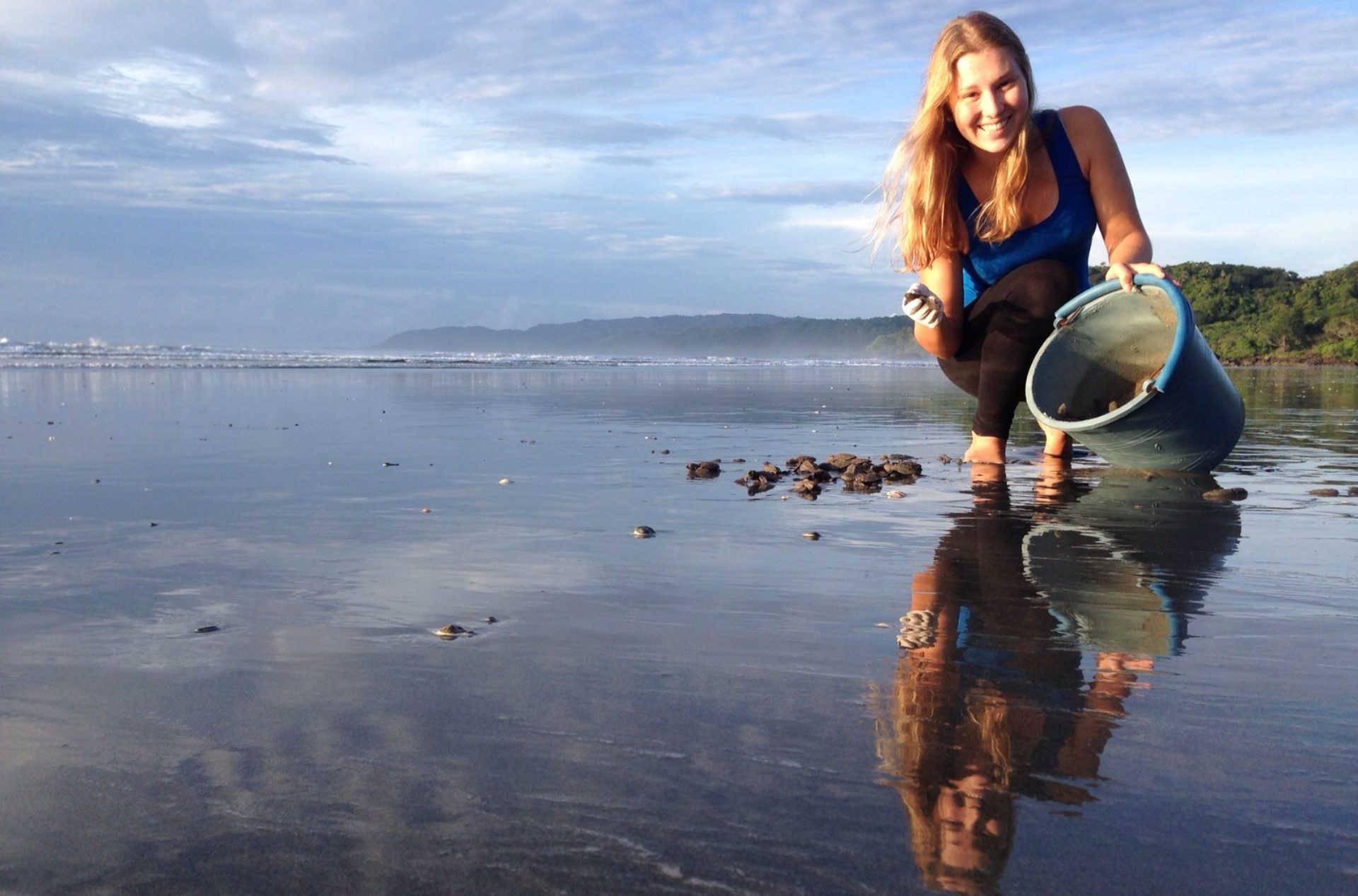Research Opportunities for Students and Independent Researchers
Located near Montezuma on the Nicoya Peninsula, Refugio Nacional de Vida Silvestre Romelia. Our mission is to rally support for long-term, sustainable strategies aimed at the restoration and preservation of wildlife and land. The RNVSR is part of the first protected area in Costa Rica on the Nicoya Peninsula. It is part of the Tempisque Conservation Area (TCA) and forms part of a biological corridor consisting of Cabo Blanco Natural Reserve, Curú Mixed Wildlife Refuge, Karen Morgensen Natural Reserve, Nicolas Wessberg Natural Reserve. Future conservation efforts in this location, therefore, have the potential to benefit a vast and interconnected ecosystem.
Romelia Wildlife Refuge provides a great opportunity for school groups and researchers to conduct studies in a tropical forest and beach setting. A large protected area and pristine forest, and high densities of many groups of terrestrial and marine animals make this an ideal setting for undergraduate and postgraduate students to establish long-term studies, to conduct their class or thesis research. Romelia is also a perfect place to make field trip in tropical ecology, biology, and environmental studies and science.
Current research has focused on Sea turtles conservation project.
Is a long term study which we were monitoring the nesting activity of Olive Ridley (Lepidochelys olivacea) and Green Sea Turtle (Chelonia mydas agasizzi) and Hawksbill sea turtles (Eretmochelys imbricata) are also occasional visitors.
Our sea turtle conservation program monitors the nesting activity, predation rates, and emerging and hatchling success of these incredible species. Our staff gathers relevant population and reproductive data while helping deter and educate poachers who collect turtle eggs for consumption or sale. Romelia has been collecting data for five consecutive years. We are studying the effect of sun and shade, and nest temperatures on the sex proportion of the hatchlings.
We are so interested in evaluating some factors that could influence beach selection on nesting Olive Ridley sea turtles (Lepidochelys olivacea). We would examine the influence of chemical and physical characteristics of beach sands on nesting behavior and clutch survival and relation of Temperature, Moisture, and Slope to Nest Site Selection
Also, we would like to know how Climate changes implications for the nest site selection process and subsequent hatching success of a green turtle population in refuge beaches. (COCAL AND COCALITO BEACHES)
What more?
Otherwise, we support a project on Ecology of some species of mammals using camera trap. In 2016, a field research initiative is implemented to study the establish Bird banding station for resident and migratory birds.
In the marine environment, projects related to fish diversity and marine invertebrate surveying.
Thesis research in areas such as; tropical biology, natural resource management, management of coastal and marine ecosystems, Biodiversity and conservation.
What makes Refugio Romelia such an ideal site for conducting research?
Romelia contains a high density of many terrestrial and marine species due to its forests and diverse habitats. In Refugio Romelia, there is easy access to all of the wildlife refuge’s habitats and its marine environments. Due to the existence disturbed areas in Romelia and small-scale agriculture (vineyard) and ranching activities, the wildlife refuge offers the unique opportunity to implement comparative studies between protected forests ( riparian, primary and secondary forests )and beaches, and other areas that are part of Romelia Wildlife Refuge.
Romelia Wildlife Refuge adjoins Nicolas Wessberg Natural Reserve, separated only by the Quebrada El Cocal. The proximity and connectivity of these protected areas can increase forest area and hence the positive effect it can have on the region. So Refuge is an important part of the biological corridor between Cabo Blanco and the Nicoya Peninsula Protected Zone and serves to increase the area of displacement of many species and hence the natural peninsular corridor.
Romelia offers several services for groups and researchers at a cost that is much lower than average at most other field stations in Costa Rica.
Researchers will have a shared room with bunk beds. Three meals a day are available, transport to and from the local Puntarenas and Playa Naranjo ferry are available. Horses can also be used to reach remote areas and to pack in field equipment. Romelia has compiled a collection data on its natural resources. These data are integrated into Romelia’s management plan, all of which are available to researchers to use as background information when conducting research at the wildlife refuge.
What about the equipment and tools?
Facilities for researchers include GPS, a weather station, Temperature sensors (HOBOS Pendant model), laboratory glassware, tape measures. Additionally, we have shelter maps, lists of species of plants, mammals, including bats, as well as amphibians and reptiles.
What about the facilities and food?
We offer accommodation and food. We have a refrigerator, gas and wood stove.
Shared room for researchers, bathroom and shower area.
Marine Ecosystem Studies
• Effect of climate change on coastal marine ecosystems. Through studies around this subject, we can evaluate what effect (s) of climate change on coastal marine ecosystems shelter; this will help in making decisions, establish and implement mitigation measures.
• Monitoring Invertebrate species richness in Rocky and sandy beaches of Romelia Wildlife Refuge.
Each researcher needs to provide the following required information:
1. Give a speech to the community and the Romelia´s staff at the beginning and ending research
2. Research proposal including research title, objectives, methodology and work schedule with timeline
3. For those projects where required, the collection or permanent or partial capture of fauna or flora, should describe the method used, the estimated number of individuals or collect biological material. The researcher must specify if have prior experience with this methodology.
4. Copy the research permit granted by the MINAE, or document that specifies the license is pending.
5. Requirements Form
6. Provide a copy of the final document (digital)
For more information regarding independent research opportunities and conducting field research classes for school and University groups, please contact refugio.romelia@gmail.com
